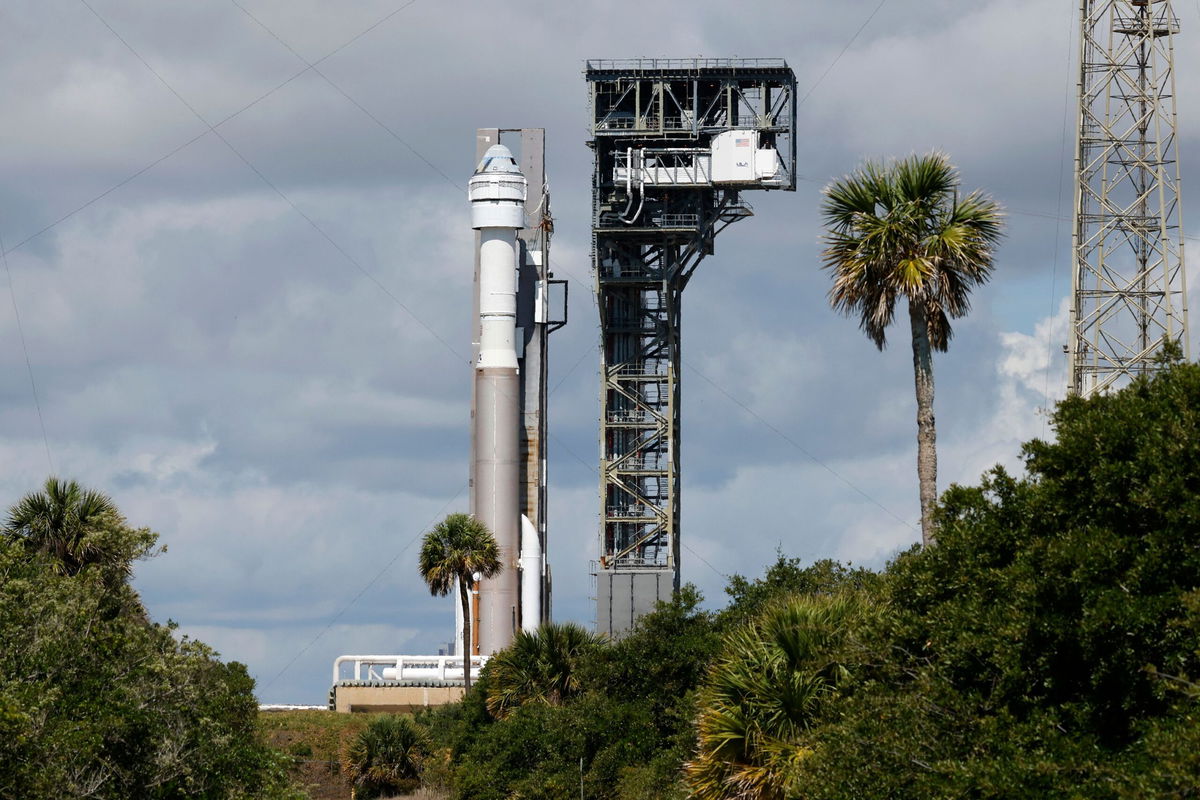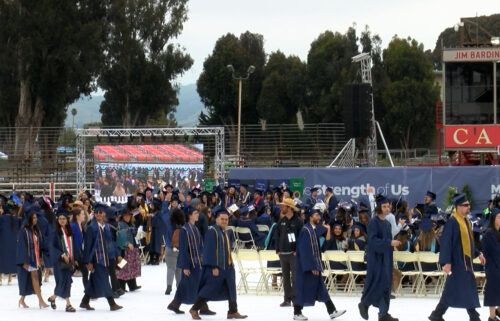Officials describe telltale ‘buzz’ that led to last-minute scrub of Boeing Starliner’s crewed launch

Originally Published: 06 MAY 24 13:42 ET
Updated: 07 MAY 24 08:20 ET
By Jackie Wattles, CNN
Editor's note: Clarification: This story was updated to clarify that Atlas V rocket was manufactured in Alabama.
(CNN) — Two NASA astronauts had reached the final hours before a long-awaited launch attempt aboard Boeing’s Starliner capsule, the first crewed mission of the new spacecraft.
But the mission was scrubbed about two hours before the countdown clock hit zero because of an issue with a valve on the Atlas V rocket, a workhorse vehicle built in Alabama by United Launch Alliance that will fire the Starliner capsule to space.
Launch officials do not yet know when they will make a second attempt to get Starliner off the ground, though they’re now targeting no earlier than May 10.
“Good things are worth waiting for, and we’ll get a chance to see that rocket and spacecraft (get) off the pad here soon,” said NASA’s associate administrator for space operations Ken Bowersox during a news briefing Monday night. “We still have to gather more data. We don’t have a definitive plan for you yet — that will come as soon as we can provide it.”
The valve at issue is located on the Atlas V rocket’s second stage, or the upper portion of the vehicle that’s attached to the Starliner spacecraft.
Occasionally, valves can get into a position where they start to “buzz” by opening and closing rapidly, said Tory Bruno, the CEO of United Launch Alliance.
Some buzzing is OK, but too much could cause the valve to fail, Bruno said. And now engineers need to determine whether the component opened and closed enough to cause concern.
Officials will spend a day evaluating the issue and determining whether the valve needs to be replaced and the rocket needs to be rolled back off the launchpad.
Why this launch is so important
Before the valve issue arose, Starliner — which Boeing designed to rival SpaceX’s prolific Crew Dragon capsule — was set to take off for its inaugural crewed test run at 10:34 p.m. ET Monday from Cape Canaveral Space Force Station in Florida.
This mission, dubbed the Crew Flight Test, could be the final major milestone before NASA deems Boeing’s spacecraft ready for routine operations as part of the federal agency’s Commercial Crew Program. The Starliner would join SpaceX’s Crew Dragon in NASA’s push to collaborate with private industry partners, expanding the United States’ options for ferrying astronauts to the International Space Station.
The mission crew members are veteran astronauts Suni Williams and Butch Wilmore, each of whom has ventured to space on two previous journeys aboard NASA space shuttle and Russian Soyuz missions.
“They’re checking out a lot of the systems: the life support, the manual control,” NASA Administrator Bill Nelson said during a Friday news conference. “That’s why we put two test pilots on board — and of course the résumés of Butch and Suni are extensive.”
This would mark only the sixth maiden voyage of a crewed spacecraft in US history, Nelson noted: “It started with Mercury, then with Gemini, then with Apollo, the space shuttle, then (SpaceX’s) Dragon — and now Starliner.”
Williams will also become the first woman ever to join such a mission.
What to expect
If all goes according to plan after launch, the spacecraft — carrying the astronauts — will break away from the Atlas V rocket after reaching orbit and begin firing its own engines. The Starliner will then spend more than 24 hours gradually making its way to the space station.
Williams and Wilmore are set to spend about a week aboard the orbiting laboratory, joining the seven astronauts and cosmonauts already on board, while the Starliner remains docked outside.
The two will then return home aboard the same Starliner capsule, which is expected to parachute to a landing at one of several designated locations across the southwestern United States.
Boeing vs. SpaceX
Much is riding on a smooth test flight. NASA has been waiting half a decade for Starliner to begin flying crew, and the development of Starliner was beset by years of delays, setbacks and blunders. More broadly, Boeing as a company has suffered years of scandals in its aircraft division that have tarnished the legacy aerospace giant’s brand.
“We got through a pretty rigorous process to get here,” said Mark Nappi, vice president and Starliner program manager at Boeing, of the development process during the Friday briefing. “And really where my source of confidence comes from is going through that process.”
If successful, the Crew Test Flight could queue up Boeing to begin flying routine trips to the space station on NASA’s behalf.
The US space agency selected Boeing to develop Starliner — alongside SpaceX and its Crew Dragon capsule — in 2014, hoping the commercial companies could create complementary new means of ferrying astronauts to the International Space Station after the space shuttle program retired in 2011.
SpaceX ultimately beat Boeing to the launchpad, carrying out its crewed flight test of the Crew Dragon capsule in May 2020. SpaceX has handled mostof NASA’s crew transportation needs since then.
“We cheer for SpaceX. That’s something that is very important to our country and very important to NASA to have that access.” Nappi said during a March news briefing. “And we’re looking forward to providing (astronaut transportation services) as well.”
The-CNN-Wire
™ & © 2024 Cable News Network, Inc., a Warner Bros. Discovery Company. All rights reserved.


